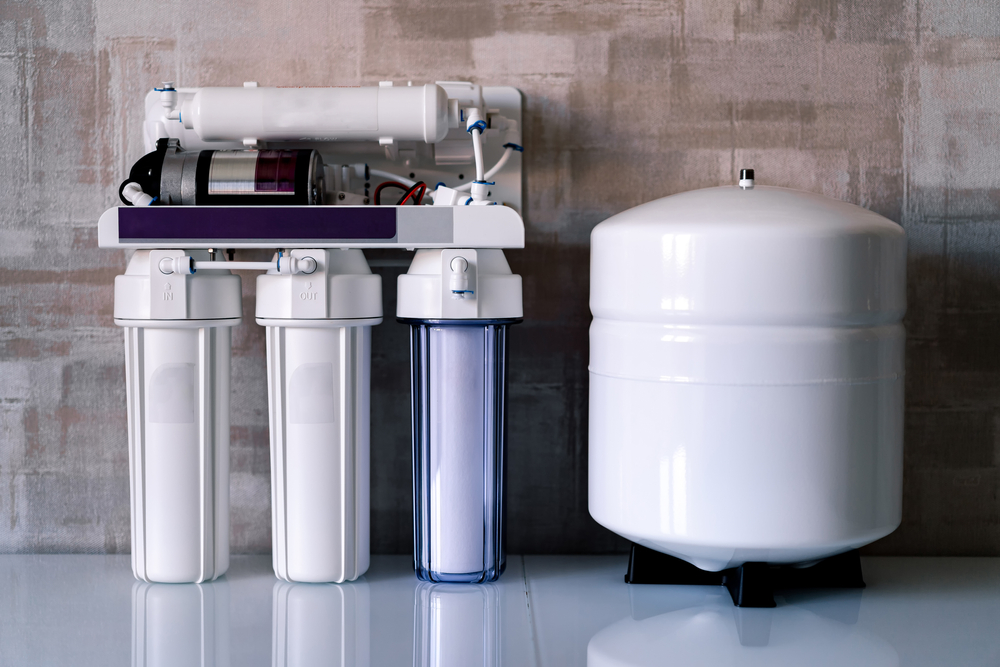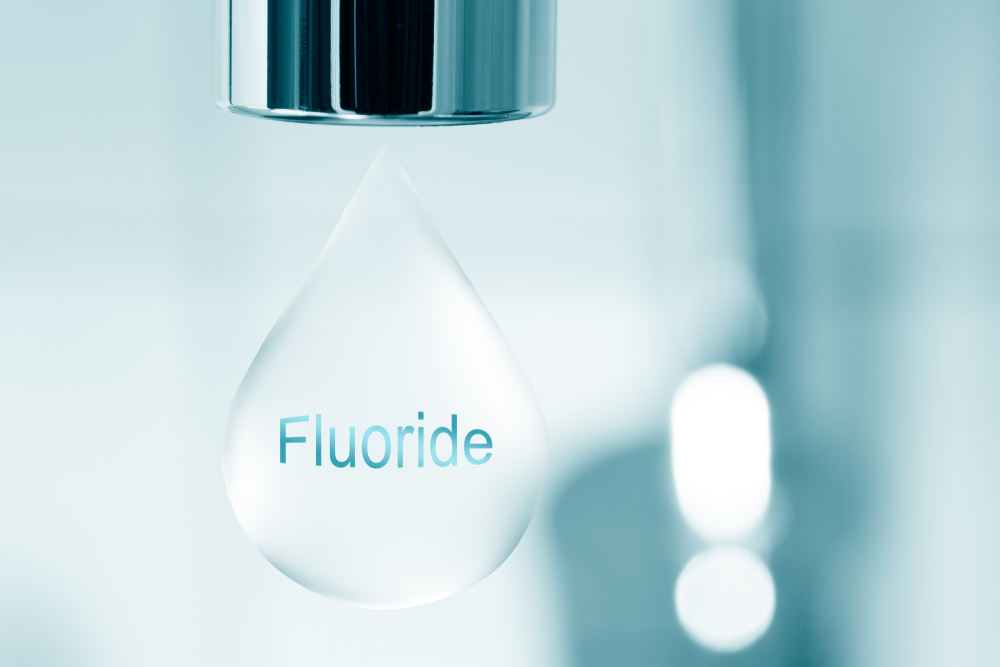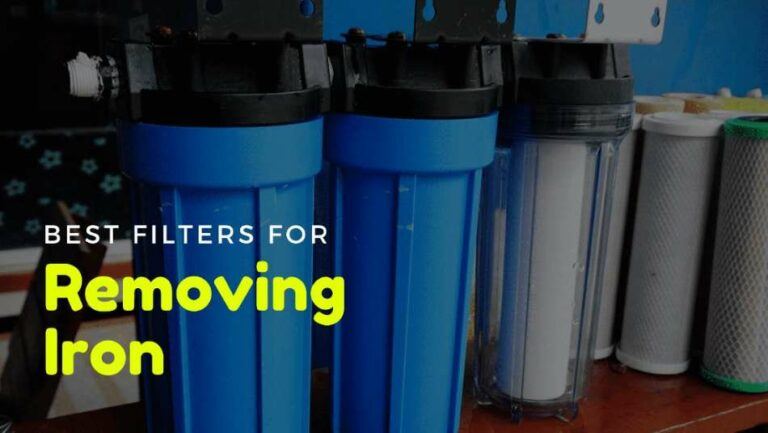Does Filtered Water Have Fluoride?
Filtered water, depending on the type, can filter out a lot of things, but not everything. So, is one of those things fluoride? Does filtered water have fluoride?
Filtered water can have fluoride depending on the type of filtered water. The best water filtration methods to remove fluoride are reverse osmosis, ion exchange, electrodialysis reversal, electrodeionization, and electrocoagulation. Although none perfectly remove fluoride, they can remove between 90% and 98% of it, depending on the method used.
What Is Fluoride And How Is It Related To Fluorine?
Fluoride is present in water with a concentration of 0.7 mg for every liter of drinking water. Also, fluoride is the 13th most abundant element by weight percent (0.054%), winning over carbon, which comes in 14th place with a weight percent of 0.02%.
Fluoride is a mineral. It is the negative ion of fluorine, an element on the periodic table. If overused before the age of eight, it can cause fluorosis, which causes surface-level changes to teeth. It naturally appears in rocks, coal, and clay. But does it also show up in filtered water?
Does Filtered Water Have Fluoride And Which Water Filters Can Remove It?

Whether or not filtered water has fluoride depends on the type of filter being used. Some filters will filter out fluoride and some won’t. Which ones? Let’s take a look below.
Carbon Filters And Fluoride
Carbon filters are used for the removal of odor, taste, and color. Is an activated carbon filter the solution? That is the misleading information many people believe.
Carbon filters are able to adsorb (which is different from absorbing and means the thing being adsorbed sticks to the surface of the adsorber) fluorine gas. But fluoride is considered an ion with a negative charge and carbon filters cannot adsorb ions. We can take chlorine and chloride as examples because they fall in the same group as fluorine. Carbon filters can remove chlorine but cannot remove or decrease chloride ions.
Sand Filters And Fluoride
Of course, we cannot consider removing fluoride with sand filters, as their job is to decrease turbidity (which is how hazy a liquid is due to particles floating in it). To remove fluoride, we have to consider what methods can remove minerals. The most common options are reverse osmosis and ion exchange. Others, like precipitation and coagulation, electrodialysis, electrochemical, and nanotechnology biotechniques are also options.
Microfiltration Or Ultrafiltration And Fluoride
Micron filters can be found in the first stage in many household filters. These filters catch small particles and prevent them from passing into filtered water. Ultrafiltration can be found as the fifth stage in some 5-stage filters like the Aqua filter. Ultrafiltration is the highest technique used to decrease turbidity. Neither microfiltration nor ultrafiltration can remove fluoride, as their only job is to remove turbidity.
Reverse Osmosis And Fluoride
Osmosis is defined as the passage of water from a low-concentrated salt solution to a high concentrated salt solution. Reverse osmosis (RO) is the process of water purification that separates ions from water through a membrane with a pore size of 0.0001. This pore size restricts the passage of ions to the product. However, pressure must be applied to the system to overcome the osmotic pressure of the water and also overcome the pressure drops on the membranes. RO can decrease the concentration of all ions.
Fluoride can be decreased like any other ion. RO can be found in any household 7-stage filter with a small booster pump connected to it to carry the process. Therefore, using a 7-stage filter, the product will have around 98% fluoride-free water. The disadvantage of using reverse osmosis is the high capital cost needed, considering the high cost of the membranes and the necessity of a good pretreatment. However, it is considered the most cost-effective method in the industrial sector.
Ion Exchange And Fluoride
Ion exchange is the process of interchange between the ions in water with another of the same charge in the media surrounding it. The media used in ion exchange is called resin.
Aquafilter succeeded in producing some units using the demineralization cartridge filter. These cartridge filters produce water that is supposed to be the most fluoride-free water.
However, a demineralization cartridge filter, if used alone, will need to be replaced occasionally. Therefore, it is always used after a RO cartridge filter to produce ultrapure water without consuming the cartridge.
The downside of using ion exchange is the high operating cost due to the high chemical consumption, as the resin needs to be generated frequently using hydrochloric acid or sulfuric acid.
Electrodialysis Reversal And Fluoride
Another option for fluoride removal is the electrodialysis reversal (EDR) method. Electrodialysis reversal refers to a process for separating an aqueous feed solution into brine and desalted water. This option can reach fluoride rejection by up to 95%.
EDR has the benefits of low-power consumption and high recovery. Moreover, EDR can handle more turbidity, suspended solids, and has a longer membrane life. Its disadvantage is that it is considered a new technology, and it is limited only to water with low total dissolved solids.
Electrodeionization And Fluoride
With electrodeionization (EDI), it is possible to achieve fluoride removal of more than 98% with low costs.
EDI is the process of producing ultrapure water. EDI, like EDR, has the merits of low-power consumption and high recovery, but an inability to handle large amounts of dissolved solids. Therefore, it is commonly used to treat RO permeate to produce ultrapure water. Also another disadvantage, like RO, EDI needs good pretreatment, as it can not handle turbidity greater than 1.
Electrocoagulation Process And Fluoride Removal
Another process that can be used is the electrocoagulation process. In this electrochemical process aluminum (Al) electrodes are used. Aluminum electrodes react with an aqueous feed solution to produce settable solids. Fluoride ions are one of the ions that react with aluminum ions and settles.
How Was Fluoride Removed In The Past?
Before the reverse osmosis and demineralization units were used, coagulation, flocculation, and precipitation were used. Aluminum salt or ferric chloride, which serves as the coagulant, was dosed in a tank and the product of the reaction, aluminum fluoride, was allowed to settle.
The main disadvantages of this system are the high doses of aluminum salts and the ferric chloride that increases the operating cost and total dissolved solids in water. Another important disadvantage in treating drinking water, as it is a health impact, is the formation of aluminum hydroxides or ferric hydrides in water and leaving them in the treated water.
This is because aluminum hydroxide is toxic and causes seizures, osteomalacia, and encephalopathy. Also, high amounts of iron in water can lead to stomach issues, nausea, and even more serious problems like diabetes or hemochromatosis.
How Will Fluoride Be Removed In The Future?
Fluoride with a high concentration in drinking water could cause serious problems. The methods we can remove the fluoride with depend on the characteristics of the water and the applications used. These techniques were a challenge in the past and were considered a revolution in science and engineering. Now, researchers are working day and night to bring us the prototype of removing fluoride through nanotechnology and biotechniques.
In Conclusion: Does Filtered Water Have Fluoride?
So, filtered water will always have some fluoride, at least as of the publishing of this article, but with the right methods, much of it can be filtered out.
So, what are your thoughts on fluoride and filtered water? Which method was most interesting to you? Let us know your thoughts and why in the comments below!








